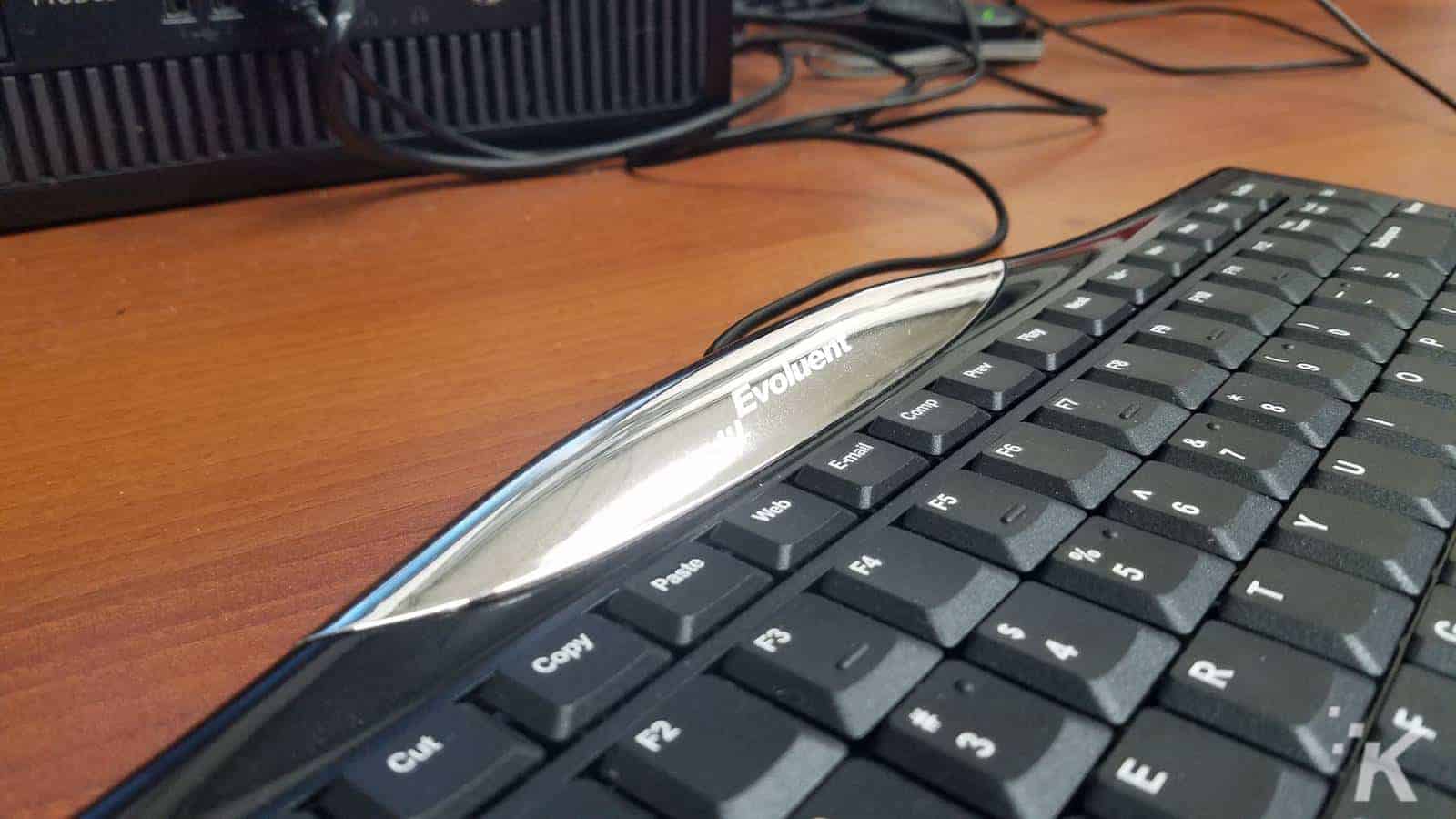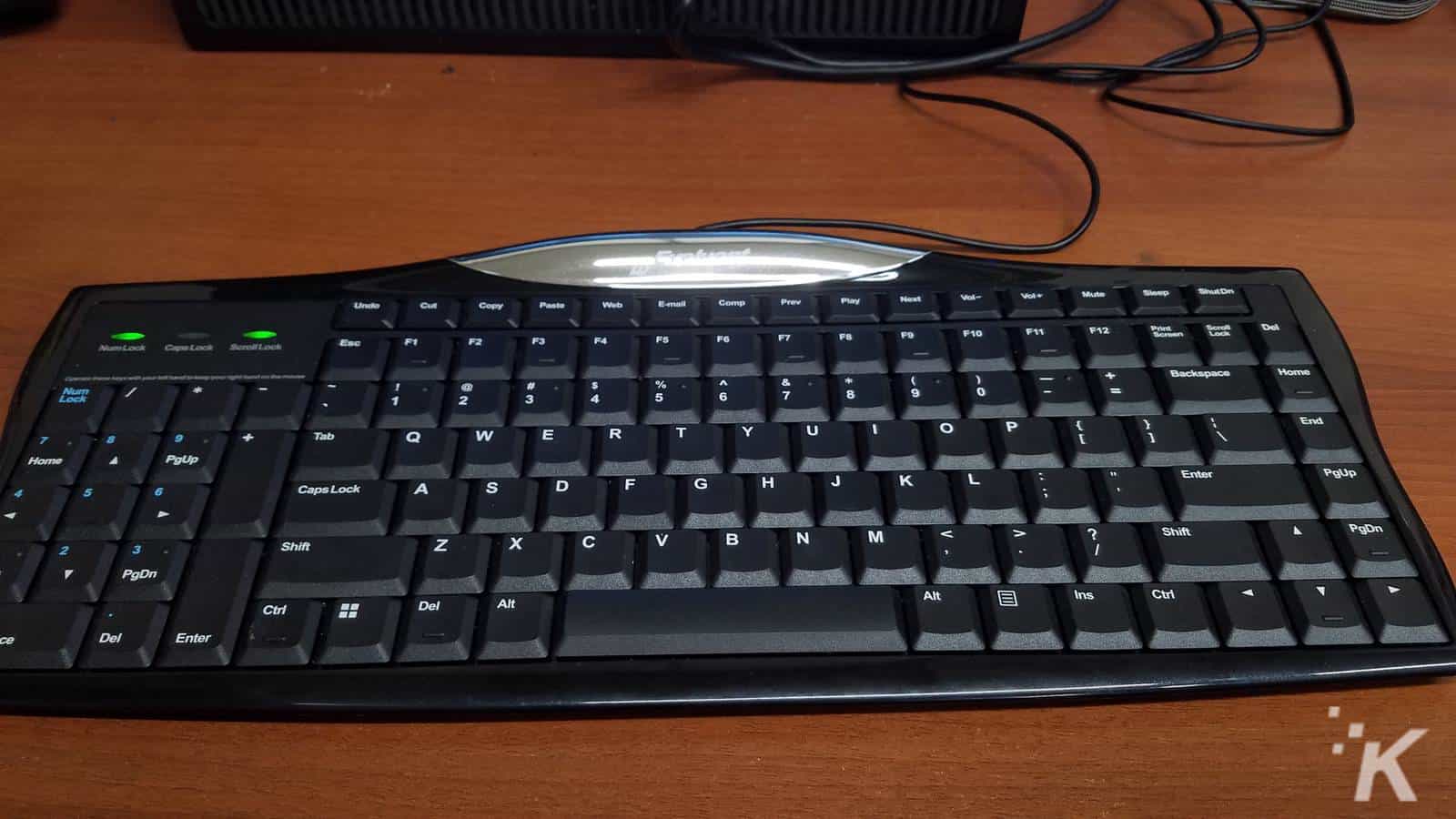hardware
Review: Evoluent reduced reach right-hand keyboard
This simple idea is hard to get used to.

Just a heads up, if you buy something through our links, we may get a small share of the sale. It’s one of the ways we keep the lights on here. Click here for more.
[letsreviewunique pros_title=”The Good” pros=”Responsive,Shortcut keys on the top,Silent keys for business environments” cons_title=”The Bad” cons=”Pricey,Hard to get used to,Only works for Windows 10 and Linux desktops,Plastic/Cheap feel” accent=”#911d9c” final_score=”65″ format=”2″ skin=”1″ animation=”1″ design=”1″][/letsreviewunique]
Keyboards have been around long before the mouse, or even the computer. Typically keyboards were used in data entry positions, and the number pad was added so numbers were easier to input.
Since keyboarders and typists are primarily right-handed, the number pad was placed on the right side. Unfortunately for left-handed entrants, there was a learning curve that led to slower inputs due to the additional movement.
When the computer was released, the keyboard has stayed virtually the same in the terms of design, and the number pad remained on the right side.
Evoluent set out to change the game and make data entry easier for left-handed users. I am not a left-handed typist, but my mother is, so I asked her for some of her opinions on the keyboard. She used it for about two weeks.
READ MORE: Keychron’s new keyboard is small but still fits a numpad
The Evoluent reduced-reach keyboard doesn’t look or feel different from other typical keyboards, besides the obvious number pad placement reversal. The keyboard is made out of plastic which creates a cheap feel, but it works all the same.
Evoluent tried to give the keyboard a stylish look with an extended front lip created out of chrome with their logo. It gives it a nice look, but overall there isn’t anything that stands out. It just looks like a keyboard with the number pad on the left-hand side.

I had a difficult time using this keyboard for the first several days. My brain has been programmed to use my right hand for the number pad, and because of that, the whole keyboard felt off. I kept missing letters and numbers.
READ MORE: Review: Cooler Master CK721
Inputting numerical data was a task. My muscle memory tried to take over, and my left hand wasn’t complying. I am 26 years old and have been using computers since I was in the single digits. I can’t erase over 20 years of muscle memory. However, my mother had a different story.
My mother is a left-hand dominate person who writes, eats, cleans, and does everything else with her dominant hand. She has had issues using the number pad as it is on the right-hand side for years. I thought this keyboard would be a good “experiment” for her.
It took her about two work days to get used to the keyboard. She explained how her hand naturally wanted to go to the right side for numbers, but her left hand felt comfortable. My mother explained that at the end of the two weeks she was used to the keyboard, but she went right back to using her regular keyboard with the number pad on the right side.
With my mother having the same amount of experience as I did, when it comes to years spent on computers, muscle memory took over. It’s very difficult to get rid of over 20 years of muscle and brain training.

The keyboard overall is responsive and works great while the keys aren’t as loud as mechanical keyboards. You can get used to the layout, but be prepared for a learning curve. It isn’t a learning curve like when you get a new mouse or keyboard, it’s a whole positional shift.
With your number pad being on the left, your mouse will naturally be closer to your keyboard. Your elbows will straighten out, which isn’t a bad thing. It all depends on the user and how well you can adapt to the change. Personally, I couldn’t.
Overall I felt that this keyboard would be better suited for introductory students who are left-handed. Having years of muscle memory programmed was too much of a hurdle for me to jump over.
The other issue I had, which was a completely personal preference, was the lack of “clicks” when I pressed the keys. As a writer who has used mechanical keyboards for years, the key presses felt too soft. The keys did register, which is a good thing, but I think I am too set in my ways.
If you are interested in the Evoluent reduced reach keyboard, you can purchase one here on Amazon or via the company’s website for $59.99.
Have any thoughts on this? Let us know down below in the comments or carry the discussion over to our Twitter or Facebook.
Editors’ Recommendations:
- Review: UGREEN HiTune X6 Noise Cancelling Earbuds – almost everything you want under $40
- Review: TRNDlabs FADER drone – a terrific little drone that has one glaring weakness
- Review: EPOS H3Pro Hybrid – a solid, yet pricey headset with ANC
- Review: TempSpace standing desk – a solid value at $300
A sample unit was provided to KnowTechie for the purpose of this review































